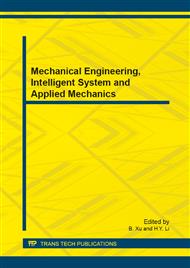p.89
p.93
p.97
p.101
p.105
p.111
p.116
p.121
p.125
Aerobic Production of Butanol with Bacillus amyloliquefaciens NELB-12
Abstract:
n-butanol is a basic chemical compound with lower volatility, intersolubility and higher heating value, making it suitable to be used as a potential alternative biofuel. One butanol producing strain was isolated from soil and identified by 16S rDNA sequencing. Two universal primers (27F, 1492R) were used. Squence analysis indicated 16S rDNA sequence (Accession Number KF418240) of this strain was 99% identical to that of Bacillus amyloliquefaciens. This strain was designed as Bacillus amyloliquefaciens NELB-12. Optimaization of fermentation medium composition and fermentation conditions were carried out. The optimal medium main components were 30 g/l starch, 4 g/l ammonium nitrate, and 30 g/l beef extract. The optimal fermentation cultured with working volume of 120 ml in 250 ml flask at pH 6.5, 39°C, and 100 rpm. Bacillus NELB-12 could produce butanol at higher concentration that reached 8.9 g/l with a total ABE of 12.7 g/l and showed a high butanol tolerance. B. amyloliquefaciens NELB-12 is considered as an economical and cost effective potential producer for butanol industry.
Info:
Periodical:
Pages:
105-110
Citation:
Online since:
December 2013
Authors:
Keywords:
Price:
Сopyright:
© 2014 Trans Tech Publications Ltd. All Rights Reserved
Share:
Citation:


